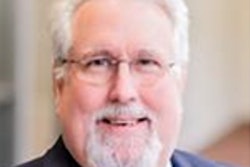
What can be done to boost interest in nuclear medicine among medical students? Piquing their interest could be as simple as conducting a 30-minute seminar early in their medical training, according to a study published July 22 in Academic Radiology.
The field of nuclear medicine has been facing workforce challenges as fewer medical students pick the discipline for additional training. Fewer early-career radiologists are choosing to subspecialize in nuclear medicine, and the discipline's workforce is getting older. What's more, the field is seen as lacking diversity, wrote a team led by Dr. Samuel Allen of Wake Forest University.
Part of the problem could be that few medical students are exposed to nuclear medicine at an early stage in their training. Indeed, nuclear medicine is only taught at one-third of the U.S. medical schools that have associated nuclear medicine programs, according to a survey of nuclear medicine program directors conducted by Cheng et al and published in Journal of Nuclear Medicine in 2021.
To rectify the situation, Allen and colleagues led the development of an educational program designed for preclinical medical students and undergraduate college students designed to boost their understanding of and interest in nuclear medicine. The presentation was given in a lecture format using Microsoft PowerPoint and covered seven main areas:
- A definition of nuclear medicine and radiology
- A comparison between nuclear medicine and radiology
- A short introduction to different medical imaging technologies, including x-ray, CT, MRI, and PET
- An overview of several nuclear medicine cases in different areas of pathology
- An explanation of therapeutic-based nuclear medicine
- A three-minute video produced by the Society of Nuclear Medicine and Molecular Imaging (SNMMI)
- An invitation to students to learn more about nuclear medicine and/or radiology
The presentations were given at an institutional interest group fair, as well as by email invitations within the medical school. In all, 83 students participated in the seminar.
To assess the effectiveness of the presentation, Allen et al administered a pre- and postassessment to discern changes in knowledge and perspectives of the students. Responses were coded on a five-point scale, with 1 representing "strongly disagree" and 5 representing "strongly agree."
The researchers found a statistically significant improvement in perceptions of the participants in their understanding about nuclear medicine, as well as increases in their self-assessed ability to pursue a training pathway in nuclear medicine if they chose to do so. Their interest in becoming a nuclear medicine physician also edged up.
| Changes in perceptions after nuclear medicine presentation | |||
| Before presentation | After presentation | p-value | |
| Understanding of the scope of nuclear medicine | 2.35 | 4.08 | p < 0.001 |
| Confidence in ability to train in nuclear medicine | 2.91 | 3.87 | p < 0.001 |
| Interest in becoming a nuclear medicine physician | 2.39 | 3.06 | p < 0.001 |
The researchers concluded that their study indicated that a simple 30-minute presentation, when given at the right stage of a student's education, can improve their understanding of nuclear medicine and their confidence and interest in pursuing a career in the field.
The impact of the presentation seemed to be greatest among first-year medical students, followed by second-year medical students, and then undergraduates. What's more, three of the 15 undergraduates who viewed the presentation requested shadowing opportunities after the seminar.
"These findings suggest that while there may be a benefit in specifically targeting first-year medical students in regard to knowledge gained from the presentation, the overall goal of increasing interest in a nuclear medicine career and empowering students to believe they can achieve this goal were met for all three cohorts without a significant difference between them," Allen et al concluded.




















